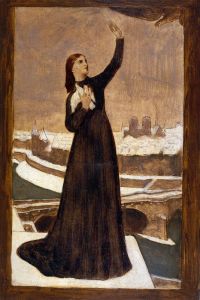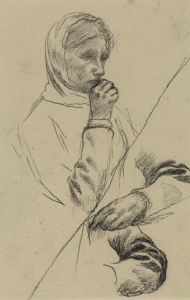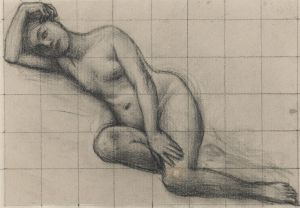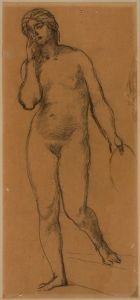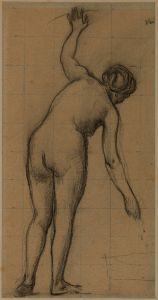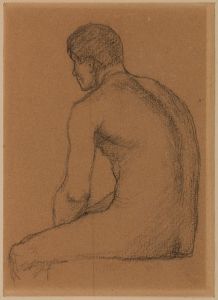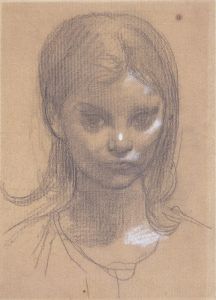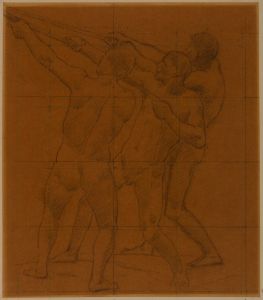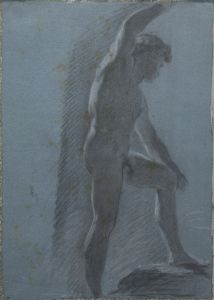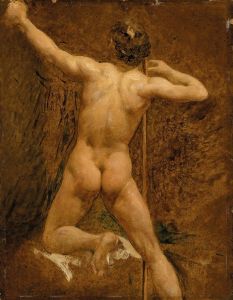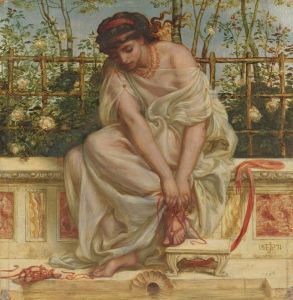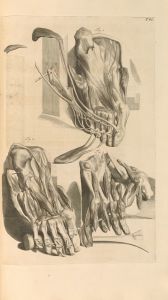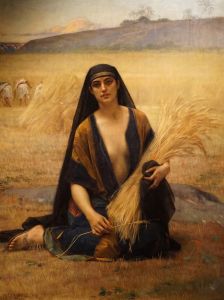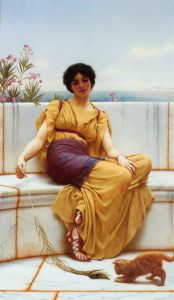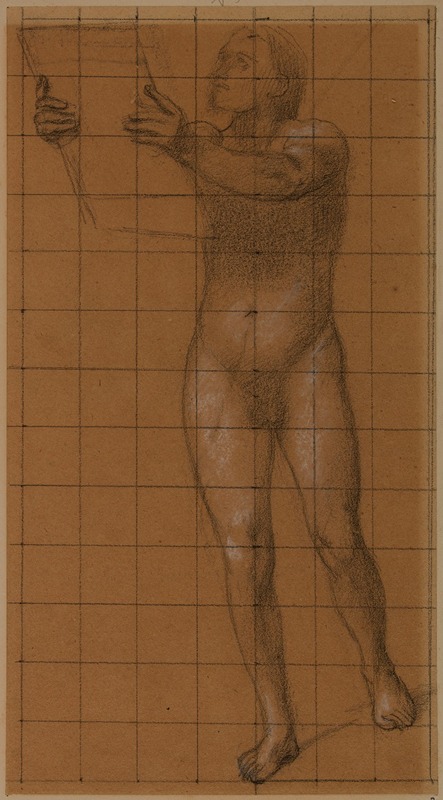
Homme nu, de face tenant une tablette
A hand-painted replica of Pierre Puvis de Chavannes’s masterpiece Homme nu, de face tenant une tablette, meticulously crafted by professional artists to capture the true essence of the original. Each piece is created with museum-quality canvas and rare mineral pigments, carefully painted by experienced artists with delicate brushstrokes and rich, layered colors to perfectly recreate the texture of the original artwork. Unlike machine-printed reproductions, this hand-painted version brings the painting to life, infused with the artist’s emotions and skill in every stroke. Whether for personal collection or home decoration, it instantly elevates the artistic atmosphere of any space.
Pierre Puvis de Chavannes was a notable French painter of the 19th century, renowned for his mural paintings and contributions to the Symbolist movement. One of his works, "Homme nu, de face tenant une tablette," which translates to "Nude Man, Facing Forward, Holding a Tablet," exemplifies his distinctive style and thematic focus. While specific details about this particular painting are limited, it is possible to discuss its context within Puvis de Chavannes' body of work and the broader art movements of his time.
Puvis de Chavannes was born on December 14, 1824, in Lyon, France. He initially pursued a career in engineering but later turned to painting, studying under various artists in Paris. His artistic career gained momentum in the mid-19th century, and he became known for his large-scale murals, which often depicted allegorical and classical themes. His work is characterized by a subdued color palette, simplified forms, and a focus on harmony and serenity.
The painting "Homme nu, de face tenant une tablette" likely reflects Puvis de Chavannes' interest in classical themes and figures. Nude figures were a common subject in his work, often representing ideals of beauty, purity, and timelessness. The depiction of a man holding a tablet could suggest themes of knowledge, communication, or record-keeping, aligning with the symbolic and allegorical nature of much of Puvis de Chavannes' oeuvre.
Puvis de Chavannes' style was influential in the development of Symbolism, a movement that emerged in the late 19th century as a reaction against the realism and naturalism that dominated the art world. Symbolist artists sought to express ideas and emotions through symbolic imagery, often drawing on mythology, literature, and religion. Puvis de Chavannes' work, with its emphasis on mood and meaning over realistic representation, resonated with these ideals and inspired many younger artists, including the likes of Paul Gauguin and Georges Seurat.
Throughout his career, Puvis de Chavannes received numerous commissions for public buildings in France, including the Panthéon and the Sorbonne in Paris. His murals were celebrated for their harmonious integration with architecture and their ability to convey profound themes in a visually accessible manner. Despite the acclaim he received during his lifetime, Puvis de Chavannes' work fell out of favor in the early 20th century, overshadowed by the rise of modernist movements. However, his contributions to the development of modern art have been increasingly recognized in recent decades.
In summary, while specific information about "Homme nu, de face tenant une tablette" is limited, it can be appreciated within the broader context of Pierre Puvis de Chavannes' work and his influence on the Symbolist movement. His paintings continue to be studied for their unique blend of classical themes and modern sensibilities, reflecting a pivotal moment in the history of art.





